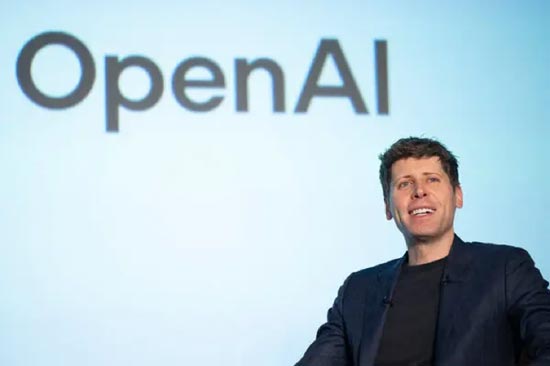"Predictions of massive and sustained productivity gains from AI may not materialize."
The technology industry is booming, fueled by excitement about the growth potential of artificial intelligence (AI).
But if the tech industry fails to live up to expectations, will AI repeat the dot-com bubble?
Recently, major international institutions and investment banks, while observing that increased spending on AI-related products is boosting the global economy and trade, have also issued warnings about the rapid rise in tech stock valuations driven by the AI-fueled capital boom.
International Monetary Fund (IMF) Managing Director Kristalina Georgieva recently stated that global stock prices have soared on optimism about AI's potential to boost productivity, but financial conditions could suddenly reverse, with current valuations "approaching levels seen during the dot-com boom 25 years ago." A sharp market correction would drag down global growth.
A recent Deutsche Bank research report indicates that the AI boom is helping the US economy avoid a recession, but this trend cannot continue indefinitely.
George Saravelos, global head of foreign exchange research at Deutsche Bank, stated that without large tech companies investing heavily in new AI data centers, the US would be close to a recession this year.
Oxford Economics also warned in its latest report that the tech sector has been the primary driver of recent US economic growth, with soaring stock prices and heavy investments in equipment and software. "But if the tech sector experiences a recession, the US faces risks: without tech investment, US gross domestic product (GDP) would barely grow by the first half of 2025, and business investment would actually decline."
Adam Slater, senior economist at Oxford Economics and lead author of the report, stated that "the risk of a US tech recession is lower than during the height of the dot-com bubble in 2000, but it is far from negligible. Particularly worrying is that predictions of substantial and sustained productivity gains from AI may not materialize."

The AI boom cannot last indefinitely.
On the 7th, the World Trade Organization (WTO) stated in its latest "World Trade Prospects and Statistics" report that global merchandise trade exceeded expectations in the first half of 2025, driven by factors such as increased spending on AI-related products.
AI-related products (including semiconductors, servers, and telecommunications equipment) drove nearly half of the overall trade growth in the first half of the year, with a 20% year-on-year increase in value. This trade growth spanned all parts of the digital value chain, from raw materials like silicon and specialty gases to equipment supporting cloud platforms and AI applications.
Marc Bacchetta, Acting Director of the WTO's Economic Research and Statistics Division, explained that regional contributions to trade in AI-related goods also varied.
Specifically, North America performed particularly well in terms of imports, with semiconductor imports increasing by 36%. However, the majority of the growth in AI-related trade came from Asia, accounting for nearly two-thirds of the total growth in AI-related trade in the first half of 2025. The WTO believes that the AI boom will continue.
Deutsche Bank, however, warned that the "AI boom cannot continue indefinitely" unless spending remains on a sustained growth trajectory.
Deutsche Bank's research found that most of the current growth is coming from new facilities built by workers, while AI technologies and services have yet to make a substantial contribution to GDP. Meanwhile, nearly half of the S&P 500's market gains have been driven by technology-related stocks.
Ryan Hass, director of the John L. Thornton China Center at the Brookings Institution, recently told Yicai Global that the current boom is driving the construction of many new factories, many of which use high-value-added automated production models. "They create front-end construction jobs and back-end service jobs, but the direct employment created by these new factories is actually very small."
George Saravelos believes that for the technology cycle to continue to contribute to GDP growth, capital investment needs to maintain parabolic growth, "which is almost impossible."
How High is the Risk of a Bubble?
Almost simultaneously, the IMF and the Bank of England also began warning that the capital boom surrounding AI poses a risk of a bubble. The Bank of England's Financial Policy Committee stated that the US stock market appears overvalued across several indicators, particularly for AI-related technology companies.
The committee explained that the top five technology companies in the S&P 500—Apple, Microsoft, Google's parent company Alphabet, Amazon, and Nvidia—hold a combined market capitalization of approximately 30%, the highest level in 50 years. This high concentration makes the market particularly vulnerable to shocks when expectations for AI cool.
In its report, Oxford Economics stated, "If a tech recession were to occur, the main drag would come from reduced investment in tech equipment and software and falling stock prices. The latter is particularly dangerous given that tech stocks account for approximately 40% of the S&P 500."
Slater and others used Oxford Economics' global model to construct two tech recession scenarios.
In the scenario of a US-centered recession with modest international spillovers, "US GDP growth would fall to just 0.8% in 2026, teetering on the brink of recession."
Adding broader international spillovers, in this scenario, "global growth would fall to just 1.7% in 2026, well below trend, with major US trading partners and parts of Asia particularly affected," Slater told Yicai Global.
He also explained that US tech stock prices have soared over the past two years. Technology and communications stocks now account for over 40% of the S&P 500, comparable to the peak of the dot-com bubble in 2001, compared to just 25% in 2018.
"The AI-related technology boom is also having a significant positive impact on U.S. economic growth. Investment in information processing equipment and software is projected to grow at an annualized rate of 20% to 40% in the first half of 2025, the fastest pace since the internet era of the late 1990s and early 2000s," he said. "If AI can significantly improve productivity and accelerate the pace of innovation, its economic benefits will be substantial."
However, he noted that if the tech sector disappoints, the U.S. economy will be vulnerable: in the first half of 2025, tech investment accounted for all of the growth in U.S. fixed investment, while investment in other sectors actually declined.
Oxford Economics also warned in the report, "The danger is that we could repeat the mistakes of 2001-2002, when the tech bubble burst and dragged down the US economy. During this period, technology stocks fell by approximately 70%, and business investment also declined, with the technology sector performing the worst."
For example, "the wide variation in estimates of the potential productivity gains from AI also poses a risk. Some company-level studies suggest that AI could bring significant benefits, but the extent to which these micro-level productivity gains can lead to sustained overall gains in productivity and economic growth remains unclear," Oxford Economics stated in the report.
For reference, "Looking back at the dot-com bubble, it is noteworthy that technological advances did significantly boost US productivity growth, but this effect was limited to a limited period (primarily from 1997 to 2003), after which growth trends returned to pre-dot-com bubble levels. Furthermore, productivity in some regions, such as the Eurozone, has not seen significant gains."
Oxford Economics stated in the report that the experience of 25 years ago may not be repeated, but the scale of recent investment increases by technology companies suggests they are taking significant risks. If this time there is growing evidence that productivity growth (and the resulting return of recent heavy investment) may be limited or delayed, as a recent MIT study suggests, then a sharp correction in tech stocks is likely, with negative knock-on effects for the real economy.

%20--%3e%3c!DOCTYPE%20svg%20PUBLIC%20'-//W3C//DTD%20SVG%201.1//EN'%20'http://www.w3.org/Graphics/SVG/1.1/DTD/svg11.dtd'%3e%3csvg%20version='1.1'%20id='图层_1'%20xmlns='http://www.w3.org/2000/svg'%20xmlns:xlink='http://www.w3.org/1999/xlink'%20x='0px'%20y='0px'%20width='256px'%20height='256px'%20viewBox='0%200%20256%20256'%20enable-background='new%200%200%20256%20256'%20xml:space='preserve'%3e%3cpath%20fill='%23FFFFFF'%20d='M194.597,24.009h35.292l-77.094,88.082l90.697,119.881h-71.021l-55.607-72.668L53.229,232.01H17.92%20l82.469-94.227L13.349,24.009h72.813l50.286,66.45l58.148-66.469V24.009z%20M182.217,210.889h19.566L75.538,44.014H54.583%20L182.217,210.889z'/%3e%3c/svg%3e)




